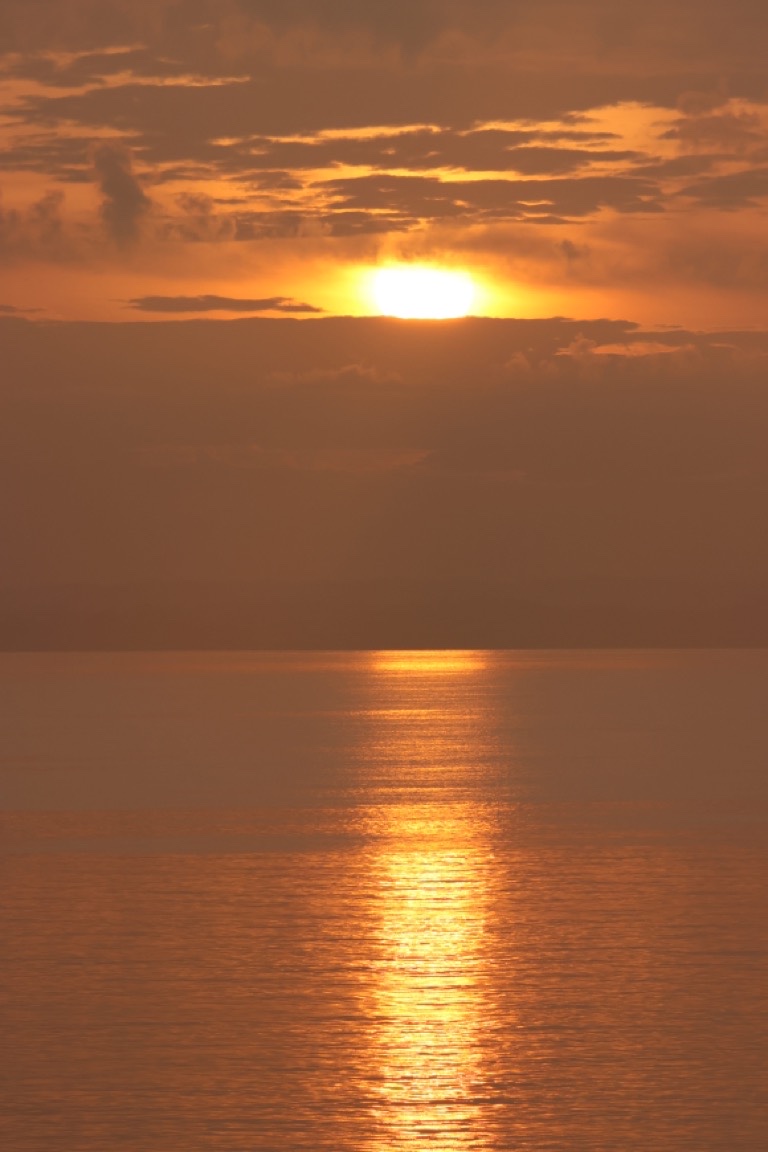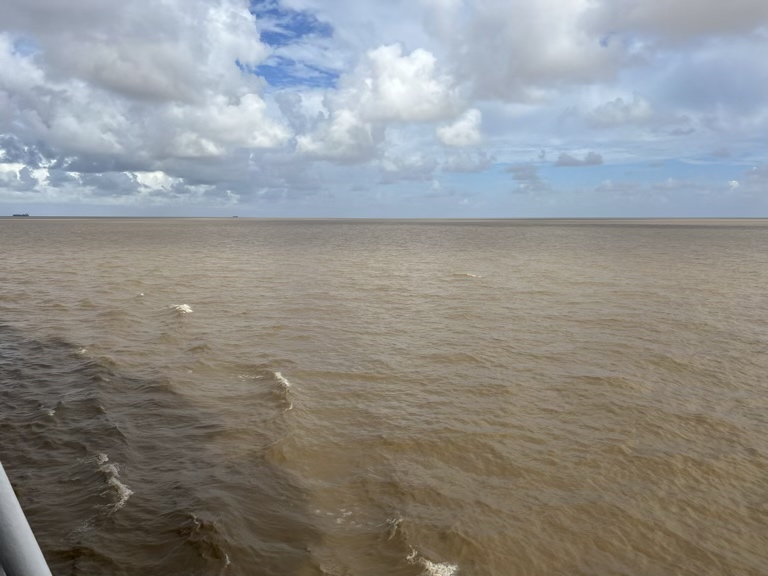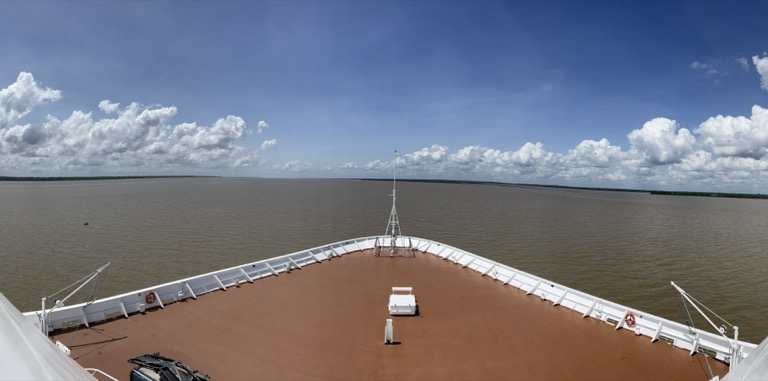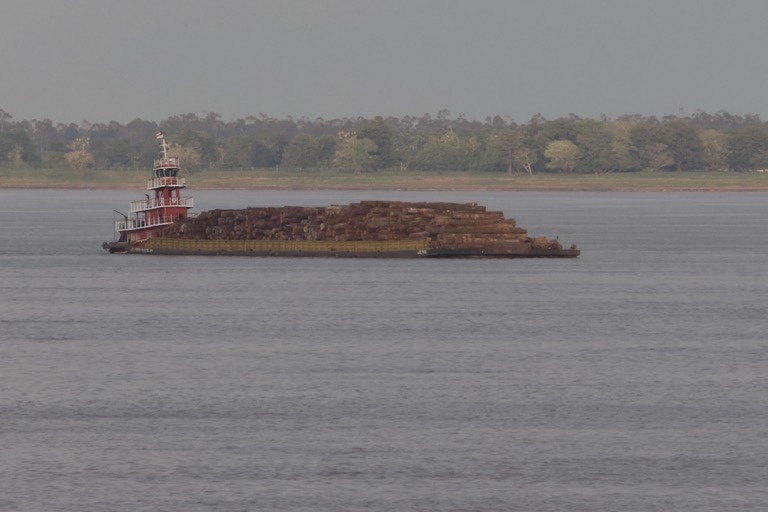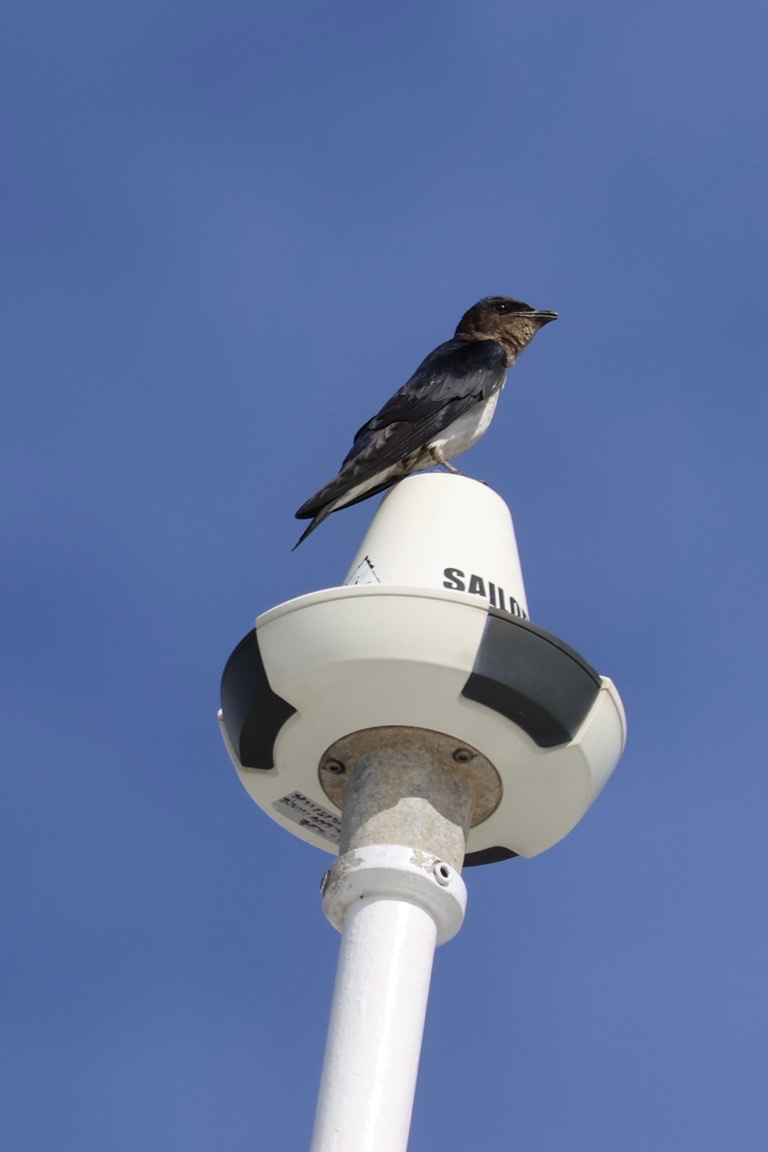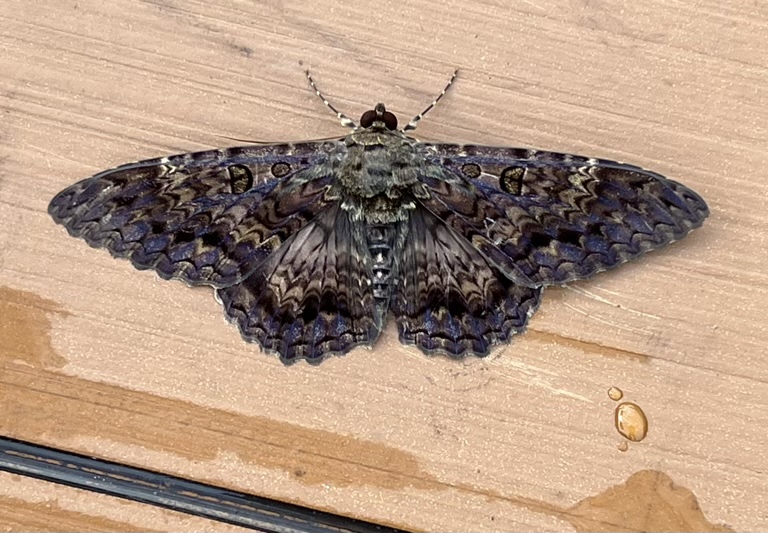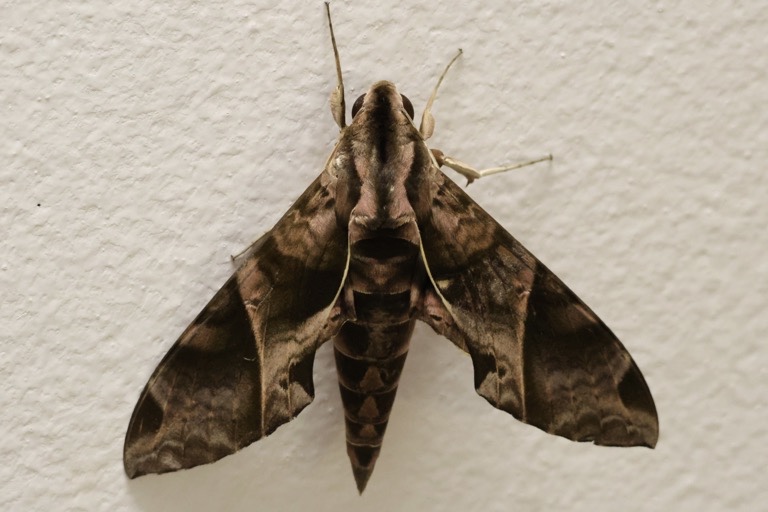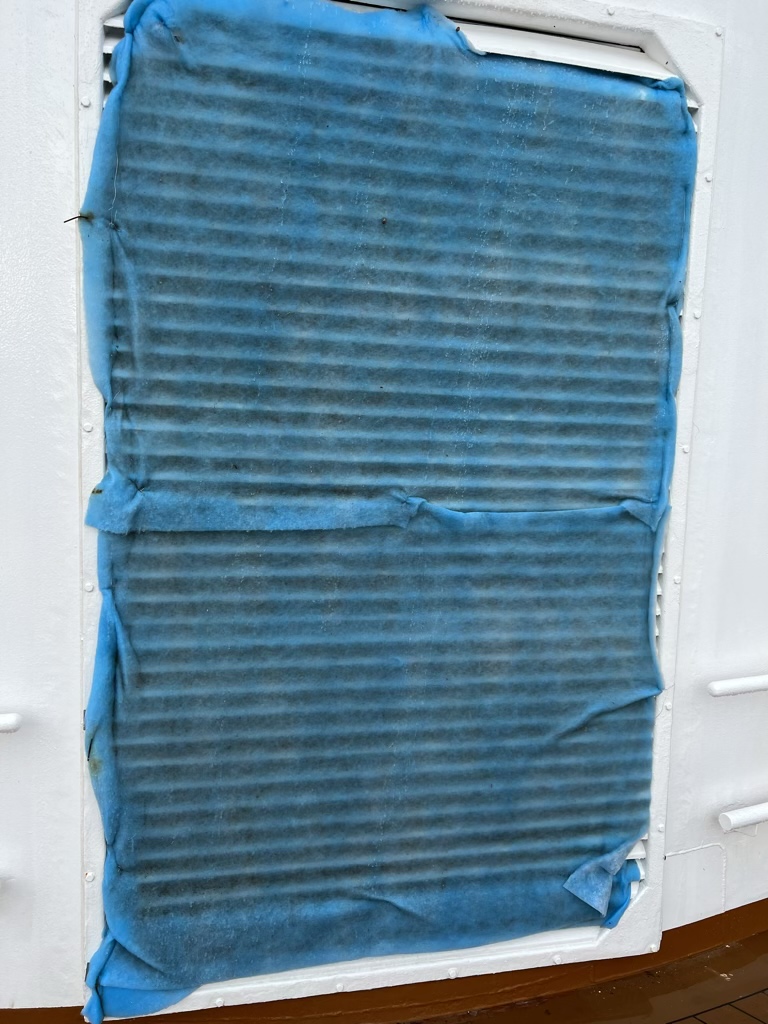on
Entering the Amazon River
We had to leave Devil’s Island on time, because there is a wide sandbar to cross entering the Amazon River. The Volendam can only cross it at high tide. It also has to cross slowly, as going faster causes the ship to sink slightly deeper into the water. The additional sink can be several meters depending on how fast the ship goes.
The ship sits a little deeper already as fresh water from the river is less dense than seawater. This effect is a few centimeters.
When we crossed the sandbar it was quite slow, 5 knots, with clearance less than a meter in places. Our captain has done the Amazon cruise several times before and hasn’t grounded a ship yet. The sandbar is not actually that close to land, the river is many miles wide at the mouth.
The fresh water will help clean the hull, barnacles can’t live in the freshwater, so they will die while we are on the river. The ship may also brush the sand and clean them off.
The captain and the cruise director keep describing the trip as an adventure. This is the first time in a few years of doing this trip, and they are not sure what to expect at the various ports.
There are other issues with cruising in fresh water. The ship’s reverse osmosis system for making potable water doesn’t work as well with fresh water, especially the very muddy water of the Amazon. So they won’t make as much on the river, so we are asked to conserve. They’ll reduce the laundry service on the river as well.
We stopped at Macapá for a couple of hours to pick up our river pilots and clear immigration for all the passengers. Here is a photo taken from the front after leaving Macapá to show how wide and dirty the river is.
We didn’t see as much traffic on the river as I expected to see. I did see the logs headed downstream.
I spent that time on deck with some bird watchers. We were anchored a quarter mile from shore, so it was a stretch of their binoculars and my camera lens to see birds, but we got a few identified. The many Turkey Vultures were the easiest to see and identify. But I also spotted a Snowy Egret on a log near the shore and a Large-Billed Tern on a floating log in the river.
This Purple Martin was catching and eating moths on the top of the ship. It would “play” with the moth, catching it, then dropping it and diving and re-catching it 4-6 feet lower.
Overnight, the ship attracts moths and other insects, even though they turn off as much external lighting as they can. Every morning you can take a walk on the deck and look for new ones you haven’t seen before. These two are quite large, four inches across.
There are also numerous smaller moths and other insects. They cause problems for the ship’s air handling systems, so they added an extra filter layer for the river portion of the trip.
